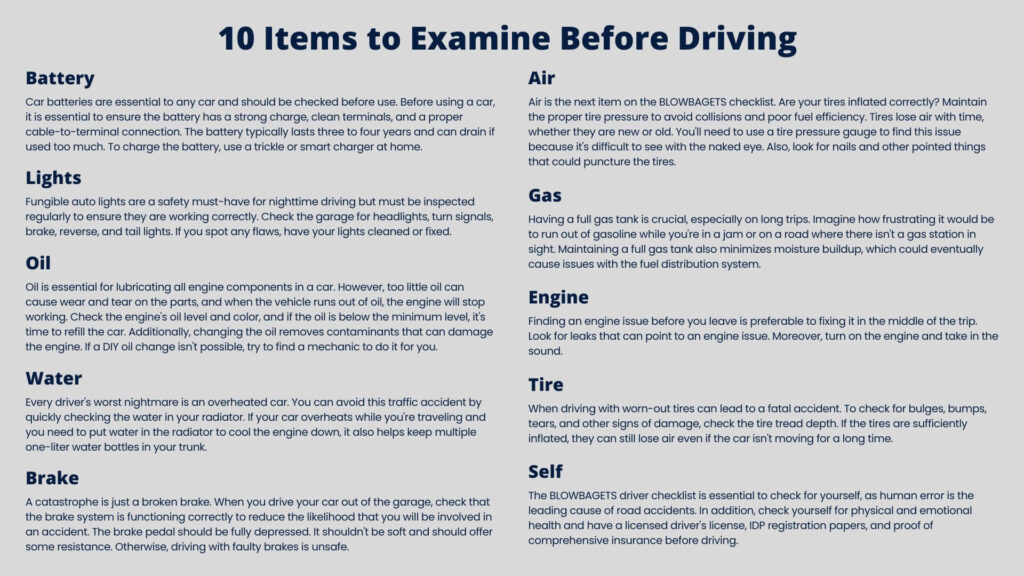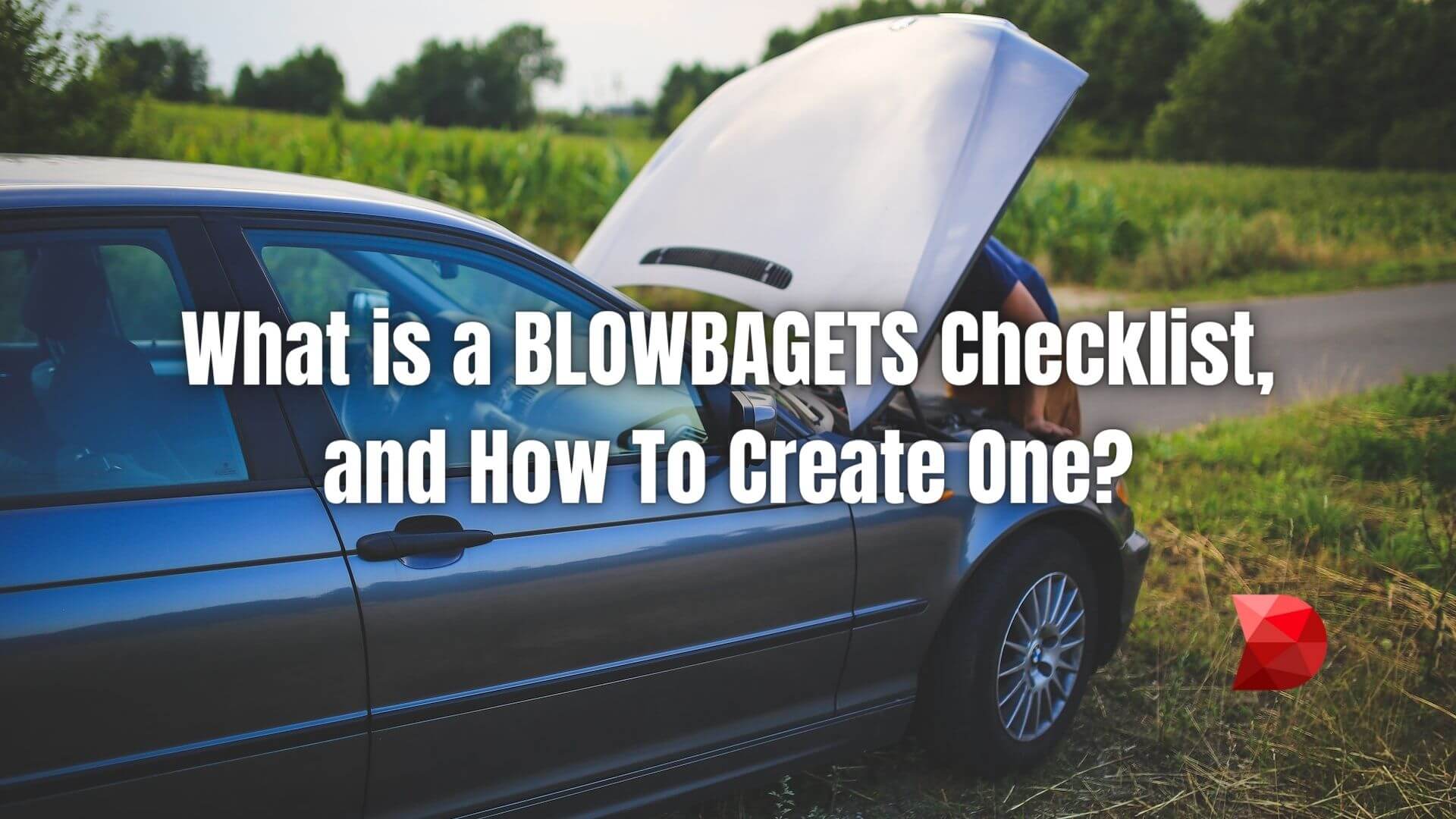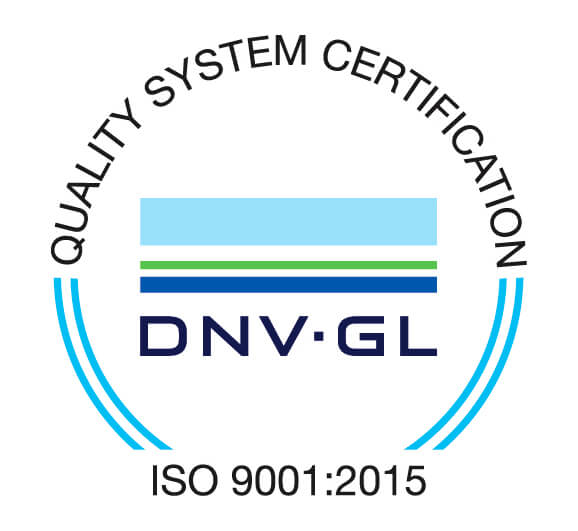Going outside the city or just running to the store quickly? Make it a practice to check your car before bringing it out of the garage, no matter where you plan to drive. Of course, when you’re racing to go somewhere, inspecting every nook and cranny of your four-wheeled vehicle is impossible. However, as a driver checking your BLOWBAGETS checklist before taking the wheel will keep you and your passengers safe.
You won’t have to worry about having a flat tire or breaking down in the middle of the road if you consistently check everything off the BLOWBAGETS checklist. And in case you’re unclear about what BLOWBAGETS refers to, let us explain it to you with this car inspection before you drive.
Table of Contents
ToggleBLOWBAGETS: What Does That Mean?
Battery, lights, oil, water, brake, air, gas, engine, tire, and self are all referred to as BLOWBAGETS. It serves as a severe reminder to examine your vehicle before driving to avoid an accident or breakdown. We owe this useful mnemonic to the Highway Patrol Group.
Checklist for BLOWBAGETS: 10 Items to Examine Before Driving
Let’s go over the key points on this list that every driver must know before starting their vehicle and leaving on the road. Driving with BLOWBAGETS can keep you safe, prevent traffic annoyances, and, most importantly, save your life.

Battery
Car batteries are essential to any car and should be checked before use. Before using a car, it is essential to ensure the battery has a strong charge, clean terminals, and a proper cable-to-terminal connection. The battery typically lasts three to four years and can drain if used too much. To charge the battery, use a trickle or smart charger at home.
Wear protective gloves and remove the entire battery if necessary. Replace the battery if it’s almost at the end of its service life.
Lights
Fungible auto lights are a safety must-have for nighttime driving but must be inspected regularly to ensure they are working correctly. Check the garage for headlights, turn signals, brake, reverse, and tail lights. If you spot any flaws, have your lights cleaned or fixed.
Oil
Oil is essential for lubricating all engine components in a car. However, too little oil can cause wear and tear on the parts, and when the vehicle runs out of oil, the engine will stop working. Check the engine’s oil level and color, and if the oil is below the minimum level, it’s time to refill the car. Additionally, changing the oil removes contaminants that can damage the engine. If a DIY oil change isn’t possible, try to find a mechanic to do it for you.
Water
Every driver’s worst nightmare is an overheated car. You can avoid this traffic accident by quickly checking the water in your radiator. If your car overheats while you’re traveling and you need to put water in the radiator to cool the engine down, it also helps keep multiple one-liter water bottles in your trunk.
Brake
A catastrophe is just a broken brake. When you drive your car out of the garage, check that the brake system is functioning correctly to reduce the likelihood that you will be involved in an accident. The brake pedal should be fully depressed. It shouldn’t be soft and should offer some resistance. Otherwise, driving with faulty brakes is unsafe.
Air
Air is the next item on the BLOWBAGETS checklist. Are your tires inflated correctly? Maintain the proper tire pressure to avoid collisions and poor fuel efficiency. Tires lose air with time, whether they are new or old. You’ll need to use a tire pressure gauge to find this issue because it’s difficult to see with the naked eye. Also, look for nails and other pointed things that could puncture the tires.
Gas
Having a full gas tank is crucial, especially on long trips. Imagine how frustrating it would be to run out of gasoline while you’re in a jam or on a road where there isn’t a gas station in sight. Maintaining a full gas tank also minimizes moisture buildup, which could eventually cause issues with the fuel distribution system. Also, it prevents fuel fumes from building up to harmful levels. Hence, before you start your car and go for a journey, check the fuel gauge.
Engine
Finding an engine issue before you leave is preferable to fixing it in the middle of the trip. Look for leaks that can point to an engine issue. Moreover, turn on the engine and take in the sound. Have your engine checked by a mechanic if you notice any strange noises, such as pinging, tapping, knocking, or rattling.
Tire
When driving with worn-out tires can lead to a fatal accident. To check for bulges, bumps, tears, and other signs of damage, check the tire tread depth. If the tires are sufficiently inflated, they can still lose air even if the car isn’t moving for a long time. Use a tire pressure gauge to ensure they’re at the recommended pressure level, and add more air when necessary. If you don’t have the necessary tools, you can have your tires pumped at the gas station on your subsequent journey.
Self
The BLOWBAGETS driver checklist is essential to check for yourself, as human error is the leading cause of road accidents. In addition, check yourself for physical and emotional health and have a licensed driver’s license, IDP registration papers, and proof of comprehensive insurance before driving.
These steps can be customized based on the specific requirements of your vehicle or driving conditions. However, performing these checks regularly is an excellent idea to help prevent breakdowns and accidents.
Why Use DataMyte to Automate Your BLOWBAGETS Checklist?
DataMyte is quality management software that can help automate your BLOWBAGETS checklist. Automating your BLOWBAGETS checklist with DataMyte can improve efficiency, reduce errors, and increase data accuracy. DataMyte’s low-code capabilities make it easy to customize forms and workflows to meet your specific needs. You can book a demo with us if you want to know more about DataMyte’s tool, Digital Clipboard.



